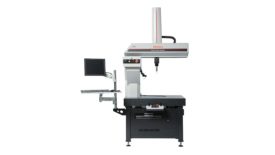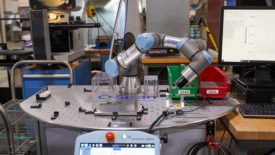Articles by Genevieve Diesing
Measurement
Many people know about GD&T, but often use it incorrectly — often setting up measurement points inaccurately and misusing size rules.
Read More
NDT | Fatigue Testing
Adapting to Modern Demands in Fatigue Testing
Equipment needs to be more intuitive and automated, making it easier to set up, control, and process test results without requiring expert skills.
September 10, 2024
Quality 101
Measurement Uncertainty 101: Automation, Bias and Advanced Management
Understanding and optimizing measurement uncertainty naturally leads to consistent product quality.
August 9, 2024
NDT | Liquid Penetrant Testing
The Current State of Liquid Penetrant Testing
Liquid penetrant testing is known for being relatively easy to perform, but it does requires skilled technicians to perform and interpret results accurately and consistently.
July 10, 2024
Software
How to Manage Security, Compliance and Best Practices in the Automation Age
When AI systems detect and address quality issues in real-time, manufacturers save on labor costs and reduce their risk.
June 18, 2024
Measurement
How IoT Integration Enhances Quality and Speed, Part 2
IoT’s real-time analytics and in-process control are making operations more precise and products more reliable.
May 2, 2024
Measurement
Precision Trends in Metrology, Part 1
The integration of 3D CAD models and advanced software algorithms are setting new standards for accuracy and efficiency in manufacturing.
May 2, 2024
Software
How FMEA is Adapting Over Time, Part 2
There’s a growing understanding that not all manufacturing or production jobs are the same, and thus, the application of FMEA should vary accordingly.
April 15, 2024
Software
How to Sharpen Your FMEA Skills, Part 1
Regular use of FMEA leads to continuous improvements in processes and products. By proactively addressing potential issues, it enhances reliability, safety, and overall quality.
April 3, 2024
Quality in Automation | Automation
Leveraging automation for quality gains
As automation simplifies and enhances manufacturing processes, quality control staff see significant career advantages, making a shift towards more efficient, consistent, and data-driven production environments.
March 29, 2024
Stay in the know with Quality’s comprehensive coverage of
the manufacturing and metrology industries.
eNewsletter | Website | eMagazine
JOIN TODAY!Copyright ©2024. All Rights Reserved BNP Media.
Design, CMS, Hosting & Web Development :: ePublishing









